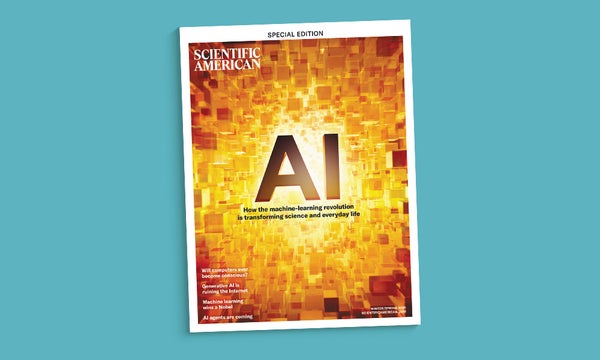AI’s integration into every thing—untangling traffic snarls, dictating drug prescriptions, rewriting the principles of scientific discovery—is accelerating snappily

Scientific American
In January, Chinese man made-intelligence start-up DeepSeek blew up the dam. The corporate released a chatbot that competitors industry leaders comparable to OpenAI’s Chat-GPT o1 and Anthropic’s Claude, and its code is open provide and free—an intelligence untethered. No extra gatekeeping by tech behemoths; now somebody with a conception and an Web connection can summon machine intelligence to resolve considerations, write computer code or dream up one thing fully new. The live consequence? AI’s integration into every thing—untangling traffic snarls, dictating drug prescriptions, rewriting the principles of scientific discovery—is susceptible to lag. For better or worse, AI is our future.
For better or worse, AI is our future.
Man made intelligence is constructed to mimic our conception processes—new objects can have up to a trillion electrical connections that resemble neuronal synapses and bustle on circuitry engineered to work address the human brain. AI systems are trained on the entirety of the Web—thousands and thousands of web sites, social media posts, reviews, recipes and forums. These files, bustle thru statistical algorithms, bear helped trim language objects (LLMs) master human language. But LLMs are underneath no circumstances in a position to elevated reasoning, memory, spatial conception, or myriad assorted abilities. These abilities are the premise of an as yet unachieved unbiased: man made overall intelligence.
On supporting science journalism
Whenever you occur to shall be enjoying this text, own in ideas supporting our award-profitable journalism by subscribing. By buying a subscription you are helping to be particular the draw forward for impactful tales about the discoveries and ideas shaping our world this day.
Because LLMs are programmed to roar themselves within the attend of the scenes, powerful of what goes on inside of these objects is a gloomy box even to the these that function them. Chatbots are susceptible to inventing files out of thin air or giving downright bad scientific recommendation. A self-discipline known as explainable AI has emerged to abet scientists expose how chatbots “deem.”
AI is immediately popping up in all facets of life. Quite a lot of U.S. cities are experimenting with AI objects to enhance the waft of traffic. AI systems tune customers’ buying habits to space custom-made product costs. Quite a lot of objects instruct on financial investments, though their success rates are low. Soon AI “agents” can also act as human proxies on the on-linepicking out books and groceries and making plug plans that align with their customers’ preferences. Because chatbots are trained on the non-public files of thousands and thousands of of us—without permission in most conditions—they replicate human biasesprogressively in detrimental methods.
Generative AI has completely infiltrated scientific publishingin step with analyses by Scientific American and others. Scientists bear outmoded AI instruments to decode feeble Roman scrolls and define animal verbal change. Such ways can also one day abet humans function previously unimaginable greatness in fields comparable to arithmetic or test with alien civilizations across light-years. LLM abilities a long way outpaces that of robotics, nonetheless researchers are pushing laborious to incorporate chatbot abilities into shifting machines.
A future defined by man made intelligence can also now not be without challenges—the industry must confront its noteworthy vitality and water calls for. And, as Nobel Prize–profitable economist Joseph E. Stiglitz noteswithout market legislation, unfettered technological innovation would not necessarily consequence in societal effectively-being. This is also up to us to resolve whether or now not AI transforms human civilization for trusty or ill.

